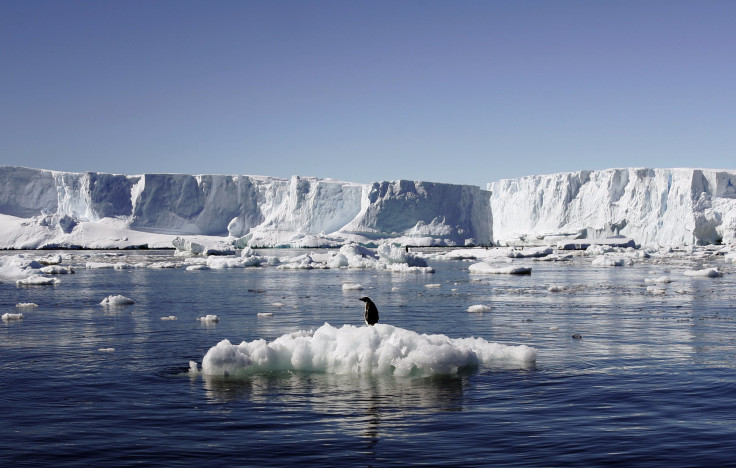Saltwater Beneath Antarctica’s Dry Valley Hints At Possibility Of Life On Mars

Researchers have for the first time found salty liquid water filled with life beneath a dry valley in Antarctica -- a discovery, which supports the possibility of life on Mars.
The researchers said, in a new study published in the journal Nature Communications on Tuesday, that the briny water will help them better understand the mysterious “Blood Falls,” a rust-colored brine that pours into Lake Bonney in Taylor Valley, the southernmost of the McMurdo Dry Valleys (MDV) in Antarctica.
“We've learned so much about the dry valleys in Antarctica just by looking at this curiosity. Blood Falls is not just an anomaly, it's a portal to this sub-glacial world,” Jill Mikucki, a microbiologist at the University of Tennessee, Knoxville, and the study’s lead author, said in a statement, obtained by Live Science.
Mikucki led an international team of researchers, which traced the liquid water below the Taylor Glacier. They discovered that the briny water underlies much of the Taylor Valley, stretching from the shore to at least 7.5 miles beneath the surface.
According to the researchers, the liquid water, which is twice as salty as seawater, was found by using a newly developed airborne electromagnetic sensor. The instrument, which is a six-sided transmitter hanged from a helicopter, creates a magnetic field that can penetrate the ground to a depth of about 1,000 feet.
The researchers believe that the water underneath Taylor Valley could have turned extremely salty due to freezing and evaporation of larger lakes that once occupied the valley. The researchers also talked about another theory, suggesting that ocean water, which could have once flooded the Taylor Valley canyons, had retreated at some point of time, leaving behind remnants.
“We interpret these results as an indication that liquid, with sufficiently high solute content, exists at temperatures well below freezing and considered within the range suitable for microbial life,” researchers said in the study.
The discovery of life-sustaining salty water beneath Antarctica also provides strong support for the theory that Mars, which has an environment that resembles Antarctic summers, could have similar conditions beneath its surface to support microscopic life, the Verge reported.
“The subpermafrost brines in the MDV provide an important terrestrial analogue for future exploration of a subsurface Martian habitat,” researchers said in the study. “Briny groundwater has been suggested as supporting a deep biosphere on Mars.”
NASA said in a recent study that water on Mars might have once covered nearly 20 percent of the planet’s surface -- an area larger than the Arctic Ocean. The study suggested that Mars was once a hospitable place, suitable for life to thrive.
© Copyright IBTimes 2024. All rights reserved.






















